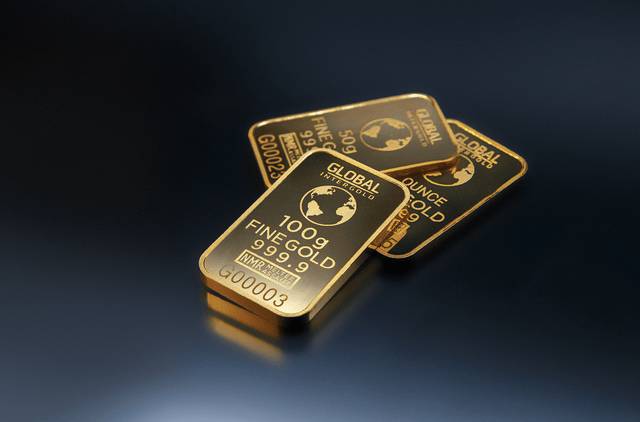Fed Rate Cut Sparks Gold Surge
The Federal Reserve's imminent decision regarding interest rates is poised to have significant ramifications on the global capital pricing landscape and asset allocation strategies. As anticipation mounts for a rate cut—a move that appears increasingly likely—the situation has generated a flurry of activity and speculation in financial circles.
Historical data reveals that Fed rate cuts do not uniformly affect various assets; instead, their influence varies considerably. Particularly during a projected decline in rates—expected to last roughly a year—investments like gold, identified as a safe haven, historically tend to thrive. Therefore, the pressing question for everyday investors is how they should position themselves in light of these developments.
A Pivotal Moment
The global capital market is on the verge of what could be a momentous shift. As the signs of an impending rate cut from the Fed become more apparent, evidenced by consistent messaging from Federal Reserve officials, market sentiment is pivoting towards a more dovish stance. Recent statements by Fed Chair Jerome Powell at the Jackson Hole global central banking conference underscored the urgency of policy adjustments, effectively signaling the start of a new rate-cutting cycle.
According to the CME's FedWatch Tool, the probability of a 25 basis point cut in September stands at 69%, while there is a 31% likelihood of a more pronounced 50 basis point reduction. Furthermore, predictions extend to November, where the cumulative chances of a total reduction between 50 and 100 basis points are substantial. The analytics suggest that the Fed's actions during their upcoming policy meeting on September 17-18 are practically assured, making an announcement of a rate cut inevitable.
Advertisement
Analysts from reputable institutions like UBS anticipate that this will mark the first rate decrease in a series of three cuts expected by the end of the year. Meanwhile, projections from JPMorgan even hint at a possible 100 basis point cut by year-end, alluding to at least one significant reduction of 50 basis points.
Historical Context
Examining past rate-cutting cycles elucidates how profoundly Fed policies can affect global capital pricing and asset allocation. Therefore, the pressing question arises for everyday investors: How should they tactically navigate this historic shift in financial markets?
The repercussions of the Fed's decision on global financial assets can be analyzed through various lenses, including capital flows, asset price movements, and prevailing market sentiments. Analyzing historical data solidifies the observation that the impact of Fed rate cuts varies widely among different types of assets. Particularly, precious metals like gold often experience price appreciation during an anticipated reduction in interest rates.
Research conducted by HSBC Jintrust Fund has analyzed the performances of major assets through previous rate-cut cycles, revealing a consistent trend where gold and equity assets generally reaped higher positive returns. The current environment, with gold prices having recently surpassed the $2500 per ounce mark, has sparked renewed interest in investing in this traditional hedge against economic uncertainty.
The surge in gold prices is credited to various factors, including rampant monetary expansion and rising inflation expectations, exacerbated by increased geopolitical risks. As central banks, including the Fed, implement quantitative easing measures, the phenomenon of currency over-supply has escalated, consequently driving gold prices higher. In an inflationary landscape, the protective qualities of gold become even more pronounced.
Unprecedented Growth
Gold has notably flourished in the current economic climate. As of now, prices have appreciated over 21% this year, carving its niche as one of the best-performing commodities for 2024. Market sentiment surrounding the Fed's upcoming rate cuts has propelled gold prices beyond the $2500 per ounce threshold, setting a new historical benchmark.
Long-term historical data underscores gold's capacity for positive returns along with low correlation to equities and bonds, making it an essential asset in modern investment portfolio strategies. There exists a plethora of investment vehicles for gold, each catering to different appetites and investor profiles. The primary ones include physical gold (such as bars), gold ETFs, and paper gold, each carrying its unique advantages and disadvantages.
Upon comparison, gold ETFs showcase distinct investment benefits:

Convenience: Purchasing gold ETFs through a brokerage account is straightforward and quick, also allowing investors to buy into linked funds through mutual fund accounts.
Cost-effectiveness: Gold ETFs avoid stamp duties and allow T+0 trading, with overall transaction costs remaining low. Management and custody fees are just 0.6%, markedly lower than the premiums associated with physical gold.
Portfolio Stabilization: Gold ETFs facilitate diversified asset allocations, helping to buffer against stock market volatility and generating rental income from the fund's assets.
With the Fed poised to ignite a new phase of rate cuts, gold ETFs emerge as a compelling avenue for investors considering exposure to this precious metal. It's critical to note that the Shanghai Gold ETF, for example, has its base assets firmly tethered to physical gold, ensuring price movements align with that of physical gold. This structure presents a more favorable alternative compared to other gold-based stocks and offers hassle-free transactions without the friction costs typically seen with bar purchases.
Evaluating mid-to-long-term trajectories, the bullish phase for Shanghai gold remains robust. From 2018 through 2023, annual price fluctuations exhibited a pattern of growth interspersed with occasional declines, alongside an impressive cumulative increase of 18.7% in 2024 alone.
It is crucial to recognize that gold investment entails certain risks; its price volatility closely parallels that of equities—at approximately 60% correlation. Certain external factors may also trigger fluctuations in gold prices. As recommendations surface, investors are encouraged to adopt a strategy centered around long-term investment to attain a suitable asset allocation.